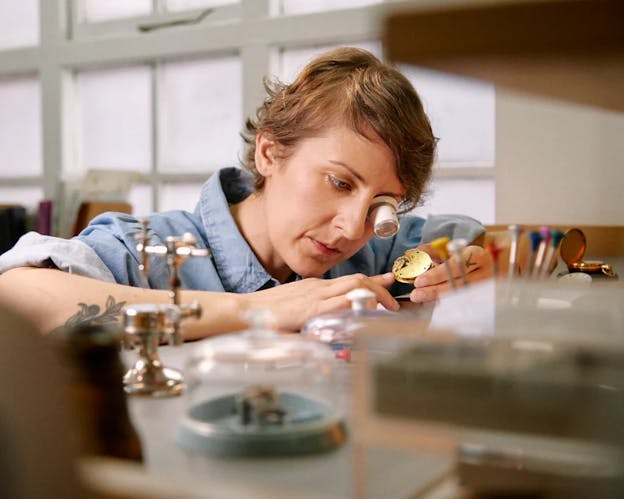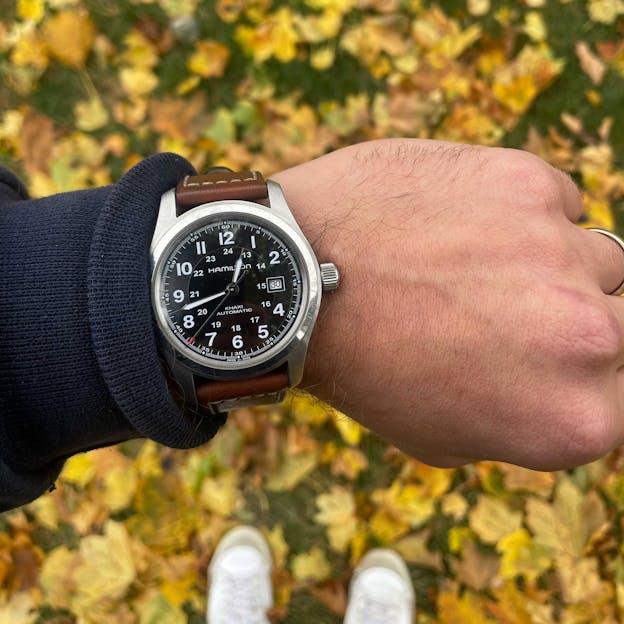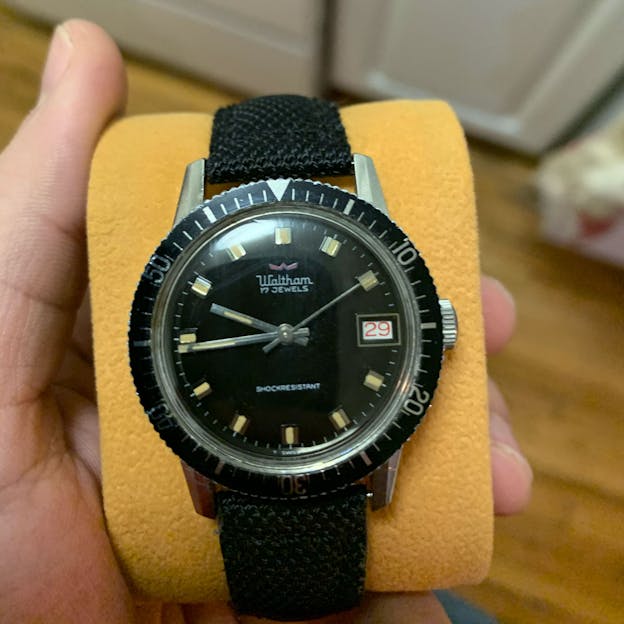Lessons from a Watch Collector: Building a Meaningful Collection Through Mistakes and Growth
Discover the joys, challenges, and wisdom gained in curating a watch collection that tells a story and stands the test of time.
In the world of horology, few pursuits are as nuanced and layered as building a watch collection. Reflecting on my own collecting journey, I find myself a vastly different collector today than I was at 20, shaped by years of exposure, learning, and the guidance by remarkable figures in our industry.
As a former educator, I find it is imperative to not just continue my learning, but to share the knowledge and experience gained… under the guise I still have so much to learn.
Some Perspective

I was raised on the pages of Vonnegut, the music of Bob Dylan, the jokes of Seinfeld, the teachings of Howard Zinn, and the documentaries of Sir. David Attenborough, so it was inevitable I was drawn to the wildly complex history of horology.
And what I believe matters most when it comes to building a watch collection comes from this perspective gained. Joe Thompson, for instance, once reflected on why watch journalism is so rich. He noted, “This beat had everything: a 500-year-old consumer product that was an object of both art and science, a global market, national industries in the throes of technological change, high stakes and high drama, with a cast of remarkable characters fighting ferociously on the marketing and technology fronts.” Horological journalism, to me, is everything a writer could ask for, capturing the thrill of reporting on a dynamic, historical field. Thompson’s work, especially his “Four Revolutions of the Modern Watch World,” is essential reading for anyone wanting to understand the modern evolution of this industry.
Rebecca Struthers, in her book Hands of Time, captured the essence of why horology is more than a pursuit of telling time. (Jack also reviewed her book here). She wrote, “The concept of time is inseparable from our culture… Time constantly passes during our every action. It is the backdrop and context of our existence and our place, in what is now an extremely mechanized world.” Her words remind me why watches hold such significance—they link us to time itself, both conceptually and physically.

Jack Forster has taught me to see romance in gears, wheels, and escapements, to appreciate both the history and artistry within movements. In his words, a watch is “a physical incarnation of an attempt to solve a problem in physics, with the practical art of mechanics.” It’s a beautiful, almost tragic aspiration—this endless quest to reach an ideal we can never fully attain, always wrestling with entropy and time.
It is through these voices and countless hours spent exploring the history and evolution of watchmaking, as well as the cultural significance of timekeeping and its far-reaching impacts, that I have grounded my collecting philosophy.
Mistakes
All right, this is a little double-sided as I hope to explain the lessons learned in watch collecting, but as is with much of life, in order to learn you must make mistakes. If you so happen to have made the same mistakes as I, well, then welcome to the club of our perpetual misguided ignorance.
While I could list many of my mistakes, I fear they would scare more people away than bring them into the beautiful world of watch collecting. Instead, here are a few anecdotes when I donned the hat of a horological halfwit.
The Graduation Gift
When I graduated college, my family asked what I’d like as a gift. Without much thought, I said, “A watch.” Why? I’m not entirely sure. I’d never owned one or worn one regularly, but something about it felt right. I remember saying, “Real adults wear watches.”
As someone who believes pulling out your phone during a meeting or spending time with loved ones is one of the rudest things you can do, a watch felt like a proper adult accessory. The mistake I made was not in asking for a watch but not guiding my family on what I thought a “nice watch” was—or even what I really wanted. I didn’t educate myself. We all know how daunting the watch world can be for newcomers—just imagine my poor mother, who bought her watches at the local Hannaford checkout line, faced with the overwhelming litany of options available.
We didn’t come from much, and a $100 watch already seemed extravagant to my family. So, they got me a gray steel Nixon with a blue dial, model unknown. It was big—43mm at the smallest—and on my 16cm wrist, it felt borderline ridiculous, like wearing a lifted truck on my arm. But I loved that watch. I wore it with pride. This is not a knock on Nixon but more a frustration with myself for not trying to learn more when I innately knew I liked watches.
If I could go back, I’d have asked for something timeless and versatile, like a Seiko 5.
The Sizing Mistake

My next misstep came with the purchase of my Hamilton Khaki Field. In 2014, after traveling solo through Europe, I landed in Boston just before my sister’s wedding. To celebrate, I walked into Tourneau with one mission: To buy an everyday automatic watch under $1,000.
For those familiar with Tourneau, you’ll know my budget didn’t leave many options. (This was before the boom of microbrands and online selling platforms). Sitting across from the sales associate—let’s call him Carl—I wavered between the 38mm and 42mm models. Carl, wearing an oversized 45mm Panerai, insisted the 42mm was the way to go.
At the time, I didn’t know much about watch sizes, proportions, or what suited my wrist. I loved the 38mm but didn’t know what was “cool.” Instead of trusting my instincts, I trusted Carl, who seemed more invested in upselling than in honest advice. I walked out of the store with the 42mm.
I still love that watch, but to this day, I wish I’d gone with the 38mm. Listening to your heart—or your wrist—matters.
The Watchmaker Experiment

In my early days of collecting, I fancied myself a budding watchmaker (in some grand illusion) and bought a watch tool kit from Amazon. My mission was to remove every caseback I owned, purely out of curiosity. I skipped learning how to change a strap, which was a glaring rookie mistake.
The first victim was my Frederique Constant Slimline, my first “true luxury” watch. I eagerly grabbed the caseback knife and went to work. Unfortunately, my inexperience showed. The knife slipped, leaving gouges and scratches on the otherwise pristine caseback. The damage bothered me so much I eventually sold the watch—a mistake I still regret.
The Vintage Giveaway

Perhaps my most painful mistake was giving away a vintage Waltham Bathyscaphe skin diver.
Here’s the backstory: I love sharing my passion for watches, and when my best friend had his first child, I thought, there is no better way to commemorate this moment than giving him a watch.. The Waltham diver seemed perfect—a meaningful gesture for someone I cared about deeply. I didn’t wear it much, setting it was annoying because there was no quick-set date, and it seemed fitting to give a young man born in New England a watch that was made in New England.
And while I don’t regret giving a watch to a close friend, I’d be lying if I said I didn’t think about that Waltham more than I should. It’s a reminder that even the best intentions can come with a pang of loss.
Lessons Learned
Now that we have reviewed a handful of my beautiful watch collecting mistakes — we need to discuss the lessons learned from my failure.
Buy what you love, not what is hyped.

There is a line in watch collecting you will hear all the time. “Buy what you love.” Now this is a bit of a convoluted statement if you break it down because it is dependent upon personal preference, of which changes over time. So yes, buy what you love, but know what you love, outside of your significant other and your pet, will always change.
The collecting world is conflated between what is rare, what is special, what is novel and what is collectible. And I think this plays into my previous sentiment about why buying what you love can feel very difficult when what you love is determined by what you are being fed from the media.
You have to ask yourself as a collector — do I like this because it is on my feed everyday or do I like this because it is actually a good watch, where I am receiving value for my money — Does it have a solid movement, intriguing design, fit a need in my collection, tell a story?
I have not always done this — I have purchased 3 different collabs with a certain content provider. I think in the beginning I didn’t know better. It also helped being single in NYC not not a husband and a father with a mortgage and car payments to worry about like today. I have sold two out of three of those watches and have zero regrets about the selling — only regret buying.
Tell a story with your watches, but be careful what that story is.

A watch should tell a story about you. We all innately tie ourselves to physical items in our world which we hope tell people something about ourselves. We all know what we think when we see a little guy pulling up to the local Applebees in a lifted truck… So, you need to be careful about the physical objects you align yourself with.
And unfortunately, many of the items which we do our research on, spend an absorbent amount of our hard earned dollars on — we can’t take them with us everywhere. You can’t bring your car or your home, or your new chop saw into a meeting with you but you can bring your watch and what that watch is can tell the world a whole lot about you. Do you value time, history, story telling, provenance, design, independent brands, or do you just value flash, panache?
Buy and wear watches that speak to the person you envision yourself to be. If you envision yourself as a rustic outdoorsman who never wears a suit, there is a watch for that. If you envision yourself as a boardroom warrior in Omaha, Nebraska, there is a watch for that. If you see yourself as a posh man of style, who prefers beachside dirty martinis in Ibiza and Persol sunglasses, there is a watch for that.
You dress for the life you want, not the life you have and that watch tells the world this.
Aligning to my first point of buying what you love… When I first started collecting I didn’t really buy for history or provenance or because I fell in love with what the watchmaker stood for or what the brand told the world was their ethos.
But today, I will not purchase a watch unless I know it shows the next evolution of me as a collector, and person.
Collect with purpose.

This is essentially a warning to not just buy to buy. Retail therapy is a thing. And it’s easy to see a new hyped-up watch and immediately throw the credit card down. Collecting watches should be more than just amassing wrist candy; it’s about building a collection with intention. For me, every watch in my collection serves a purpose. Think of it like assembling a toolkit. You don’t need ten hammers—you need a mix of tools to handle different tasks. In watch collecting, that means considering scenarios: a dive watch for adventures, a dress watch for formal occasions, a quartz beater for backyard chores, a white or salmon dial for variety, and maybe even something colorful for the days you want your wrist to pop.
But it’s not just about functions; it’s about memories. Watches have an incredible ability to tie themselves to milestones. A timepiece bought for a birthday, an anniversary, or a career achievement carries far more meaning than one bought on a whim. These are the watches you’ll cherish long after the trends fade, the ones you’ll pass down with a story attached.
This approach keeps collecting personal and rewarding. Filling voids in your collection and tying pieces to moments makes every purchase feel intentional. It’s not about having every watch—it’s about having the right watches for you.
Trust your gut.

“Trust your gut,” they say—but let’s be honest, your gut can have shit for brains. This is especially true when it comes to luxury goods like watches. It’s not like deciding what to eat for dinner, where impulse can lead to a pizza that’s “just okay.” Watches, like houses or cars, require thoughtful deliberation. Sure, you don’t wear a house on your wrist, but the principle remains: impulsive decisions can lead to regret.
I’ve fallen victim to the siren song of a watch review more times than I’d like to admit. You see the photos, read the glowing write-up, and suddenly, you’re calculating how to make it work—retirement fund be damned. Affirm payment plans start looking like a good idea, and you’ve convinced yourself this watch will complete your life.
But here’s the lesson: sit on it. Seriously, give yourself time. Let the marketing jargon fade, and allow your genuine feelings to surface. Nine times out of ten, you’ll notice something you missed in your initial excitement—a design quirk or feature that bothers you. Waiting allows clarity, helping you distinguish between hype-fueled infatuation and a true connection. I’ve learned this the hard way through several “limited edition” and collaboration watches that seemed perfect in the moment but lost their shine after the honeymoon phase.
The end of the lesson.
If I could start my watch collecting journey over again, I would approach it with far more patience and intention. I’d resist the impulse buys, dig deeper into research, and focus on educating myself before making decisions. Every watch in my collection would signify something meaningful—each a chapter in a story that reflects who I am and the milestones of my life. The items that tell my time would also remind me of that time. I’d buy pieces that fit me, suit my tastes, and resonate with my personality, trusting my gut instead of falling for a clever ad.
Watch collecting is a unique way to carve out individuality in a homogenous world—a way to participate in a club where every member tells their own story through their collection. So, take your time. Enjoy the process. Embrace the mistakes of your early collecting days as necessary steps toward growth. Push forward with the goal of curating a selection of timepieces that you and your family will cherish for generations—pieces that will keep ticking long after they’ve marked the moments of your life.

